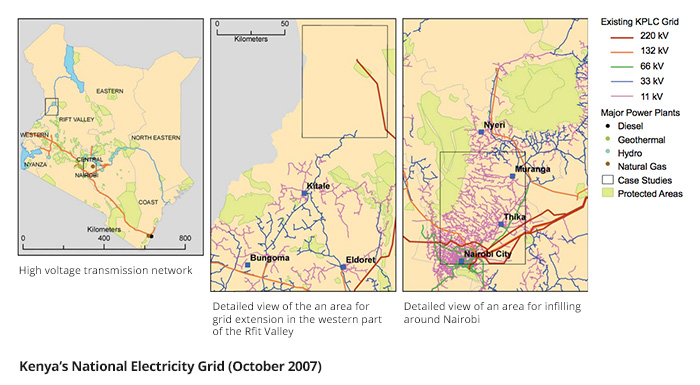National Electricity Planning in Kenya
In order to guide grid expansion in countries with low pre-existing electricity coverage, Modi Research Group has developed a spatial electricity planning model. The model can be used to rapidly estimate connection costs and compare different regions and communities. Inputs that are modeled include electricity demand, costs, and geographic characteristics. The spatial nature of the model permits accurate representation of the existing electricity network and population distribution, which form the basis for future expansion decisions. The methodology and model assumptions are illustrated using country-specific data from Kenya.
Results show that under most geographic conditions, extension of the national grid is less costly than off-grid options. Based on realistic penetration rates for Kenya, we estimate an average connection cost of $1900 per household, with lower-cost connection opportunities around major cities and in denser rural regions. In areas with an adequate pre-existing medium-voltage backbone, we estimate that over 30% of households could be connected for less than $1000 per connection through infilling. The penetration rate, an exogenous factor chosen by electricity planners, is found to have a large effect on household connection costs, often outweighing socio-economic and spatial factors such as inter- household distance, per-household demand, and proximity to the national grid.



